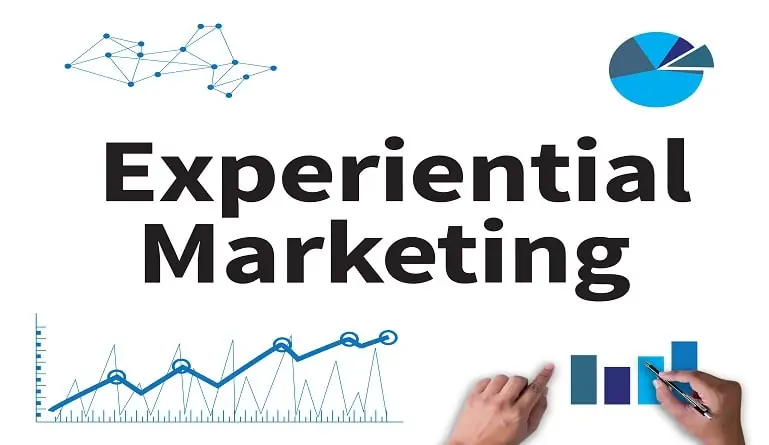In the dynamic landscape of modern marketing, data analytics stands as the cornerstone of strategic decision-making and campaign effectiveness.
It’s not merely about collecting heaps of data; it’s about extracting actionable insights that resonate with your audience and drive business growth.
Marketing data analytics entails systematically analyzing vast datasets to uncover patterns, trends, and correlations relevant to consumer behavior, preferences, and market dynamics. This process empowers you to delve deep into the psyche of your target audience – discerning their needs, desires, and pain points with unprecedented clarity.
In practical terms, data analytics enables you to:
- Segment your audience effectively,
- Personalize marketing messages and
- Optimize the allocation of resources across channels.
Let’s understand how these applications work and the benefits you can expect.
Top Data Analytics Use Cases for Marketers
As you delve deeper into the world of analytics, it’s crucial that you prioritize your efforts and focus on the best use cases for your company. Here are some of the quick wins you can look forward to from data analytics implementation:
1. Customer segmentation
Utilize data analytics to segment your audience based on demographics, behavior, and preferences. By understanding distinct customer personas, you can tailor your marketing messages and offers to resonate with specific segments, leading to greater engagement and conversion rates.
2. Personalized marketing
Leverage data analytics to deliver personalized marketing experiences across channels. This means going through past interactions and transaction histories to craft targeted messages and recommendations that cater to individual interests and needs – fostering deeper connections with your audience.
3. Predictive modeling
Harness predictive analytics to forecast future trends and anticipate customer behavior. Through the analysis of historical data and past patterns, you can develop predictive models that enable you to address emerging opportunities and mitigate potential risks proactively. Ultimately, it’ll ensure that your marketing strategies remain agile and adaptive.
4. Marketing attribution
Employ data analytics to attribute conversions and revenue to specific marketing touchpoints. Track customer journeys across channels and attribute value to each interaction. This will allow you to gain insights into the effectiveness of your marketing efforts and optimize resource allocation for maximum ROI.
5. Customer lifetime value (CLV) analysis
Utilize data analytics to calculate and optimize customer lifetime value. By analyzing past purchases, retention rates, and customer lifetime, you can identify high-value segments and tailor your marketing strategies to maximize long-term profitability and loyalty.
6. Sentiment analysis
Leverage natural language processing techniques to analyze customer sentiment and feedback across social media, reviews, and customer support channels. Monitoring sentiment trends, key themes, and sentiment drivers will allow you to unlock valuable insights into customer perceptions and preferences.
7. Real-time marketing optimization
Utilize real-time data analytics to optimize marketing campaigns on the fly. You can achieve this by continuously monitoring key metrics and performance indicators. Identify underperforming campaigns and adjust targeting, messaging, and budget allocation in real-time to maximize impact and ROI.
8. Competitive intelligence
Leverage data analytics to gain insights into competitor strategies and market dynamics. Analyze competitor performance, pricing, and positioning – this will make it easier to identify gaps in the market, capitalize on emerging trends, and refine your own marketing strategies to maintain a competitive edge.
9. Cross-selling and upselling
Utilize data analytics to identify cross-selling and upselling opportunities within your customer base. By looking at product affinity patterns, you can recommend complementary products or upgrades to existing customers. This will increase average order value and, in turn, maximize revenue per customer.
10. Ad campaign optimization
Employ data analytics to optimize your digital advertising campaigns for maximum effectiveness. Ad performance metrics such as click-through rates, conversion rates, and cost per acquisition can power smarter decision-making. You can fine-tune targeting parameters, ad creatives, and bidding strategies to improve ROI and drive better results.
11. Content marketing insights
You can identify top-performing content types and topics by analyzing content performance metrics such as engagement rates, social shares, and time on the page. Based on this, refine your content strategy and produce content that resonates with your audience.
12. Customer churn prediction
Utilize predictive analytics to identify customers at risk of churn and implement proactive retention strategies. Churn pattern and engagement analysis can help you develop more accurate predictive models that flag at-risk customers. As a result, you can intervene with targeted offers or personalized outreach to prevent churn and retain valuable customers.
What Are the Benefits of Data Analytics in Marketing?
The ‘why’ behind data analytics in marketing is obvious – it paves the way for:
- Improved customer experience: Leveraging data analytics to personalize interactions and tailor marketing messages to individual preferences can enhance the overall customer experience.
- Risk mitigation: Data analytics allows you to identify and mitigate potential risks such as market fluctuations, competitive threats, and changing consumer trends, enabling you to make proactive decisions to safeguard your business interests.
- Reduced wastage: Through data-driven optimization of marketing campaigns and resource allocation, you can minimize wastage of resources on ineffective tactics or irrelevant audiences, maximizing efficiency and cost-effectiveness.
- Measurable results: With data analytics, you can precisely track and measure your marketing efforts’ impact. In other words, you can quantify ROI and demonstrate the value of marketing initiatives to key stakeholders.
- Agile decision-making: Data-driven insights enable you to make informed decisions quickly and adapt your marketing strategies in real-time based on changing market dynamics, customer behavior, and the economic landscape.
The Marketers Guide to Data Analytics Implementation
Integrating data analytics into your marketing efforts is a strategic endeavor that requires careful planning and execution. Follow this step-by-step guide to effectively implement data analytics strategies and drive actionable insights for your marketing campaigns:
Step 1: Define clear objectives
Start by identifying clear, measurable objectives for your data analytics initiatives. Whether it’s improving targeting, increasing conversion rates, or enhancing customer retention, defining specific goals will guide your data collection and analysis efforts.
Step 2: Identify relevant data sources
Determine which data sources are most relevant to your marketing objectives. This includes customer relationship management (CRM) systems, website analytics, social media platforms, and third-party data sources. Ensure you can access clean, comprehensive data from these sources to fuel your analysis.
Step 3: Collect data consistently
Establish processes for collecting data consistently across all relevant touchpoints. This may involve implementing tracking pixels, setting up event tracking, or integrating data from multiple systems into a centralized data warehouse. Consistent data collection is essential for accurate analysis and insights.
Step 4: Analyze data effectively
Utilize analytical tools and techniques to analyze the collected data and extract actionable insights. For instance, descriptive analytics could help understand past performance, diagnostic analytics might be more suitable for identifying root causes of trends, predictive analytics can forecast future outcomes, and prescriptive analytics is ideal for recommending optimal actions.
Step 5: Interpret insights in context
Contextualize the insights from data analysis within the broader marketing landscape and business objectives. Consider market trends, competitive dynamics, and consumer behavior patterns when interpreting insights and making strategic decisions.
Step 6: Ensure data quality and reliability
Implement data quality assurance measures to ensure your data’s accuracy, completeness, and reliability. This may involve data cleansing, deduplication, validation, and ongoing monitoring to identify and address any discrepancies or anomalies.
Step 7: Iterate and refine
Continuously monitor the performance of your data analytics initiatives and iterate based on feedback and insights. Refine your data collection, analysis, and interpretation processes to improve accuracy, relevance, and effectiveness over time.
Charting New Terrain with Marketing Analytics: What Does the Future Hold?
While the opportunities associated with data analytics in marketing are attractive, the journey has hurdles. Challenges abound, from data silos and quality issues to privacy concerns and talent shortages. Yet, as a skilled navigator charts a course through turbulent waters, adept marketers can navigate these challenges with aplomb.
Embracing robust data integration strategies – such as implementing unified data platforms and standardized protocols – can dismantle silos and foster a cohesive data ecosystem. Moreover, investing in data governance frameworks and quality assurance mechanisms bolsters data integrity, ensuring that analyses are built on a foundation of reliability.
As the marketing discipline continues to evolve, these measures mitigate obstacles and pave the way for transformative insights and unparalleled success in the data-driven era.
Next, read more about Data Analytics vs. Data Visualization: What’s the Difference? Follow us on LinkedIn for more insights.





